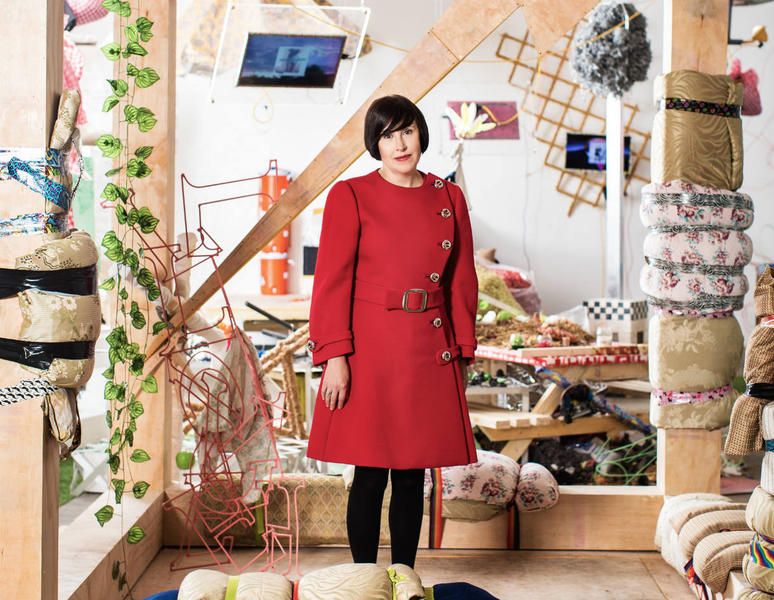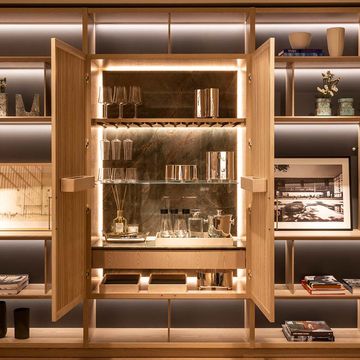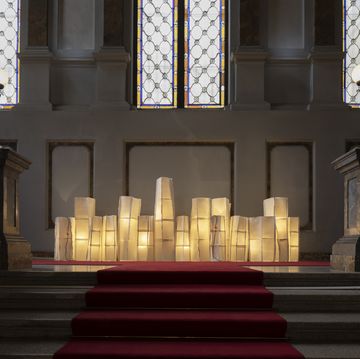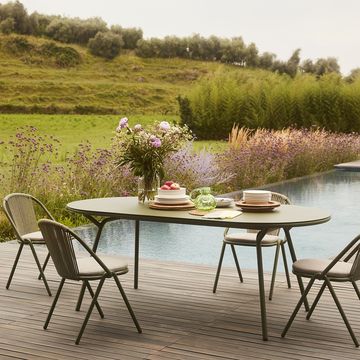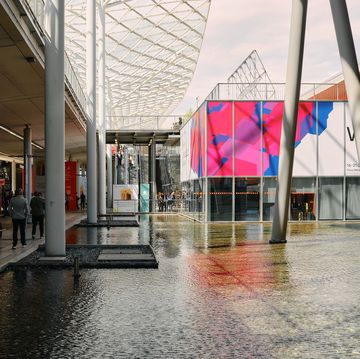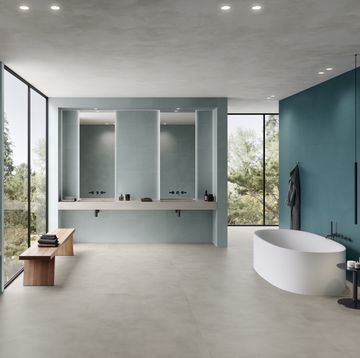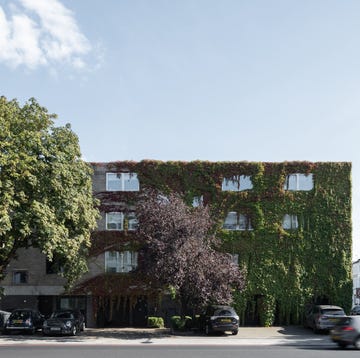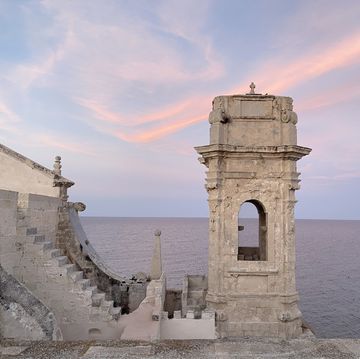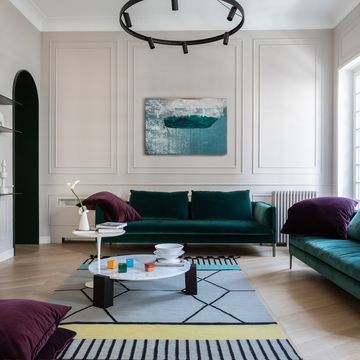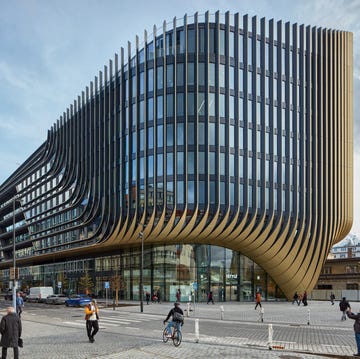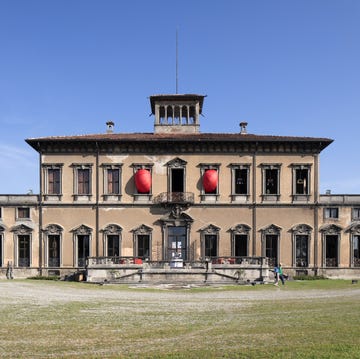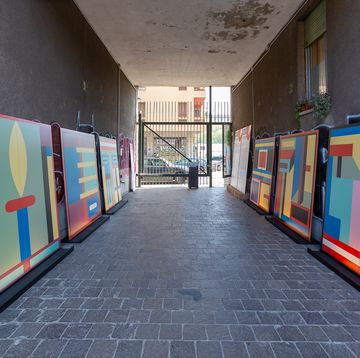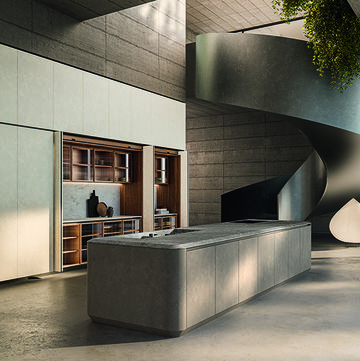Alice Rawsthorn.
A name that doesn’t need an introduction in the design world. A staple reference and critical mind not only in the design and architecture fields, but also in the broader cultural and social scene, with her immense culture, knowledge and always wide open eyes on current times and issues, with historical bases and a glimpse into the future.
Briefly, just to frame and bring her profile to the front.
British, Alice Rawsthorn is an award-winning journalist and design critic, with almost 20 years of experience at the Financial Times and weekly columns for the New York Times for over a decade.
Born in Manchester, she studied art history at Cambridge University.
A crystal clear voice and pen, she is author of several books: her Hello Word, Where Design meets Life, written in 2013, is a milestone of the design culture and education.
In 2014 she was awarded an OBE (Officer of the Order of the British Empire) for her services to design and the arts.
From the World Economic Forum in Davos to the Singapore Design Week, Alice Rawsthorn is a key-note speaker and special guest of international symposiums and appointments.
We met her in Milano on the occasion of a conference she was moderating at Domus Academy renown design school, with which she collaborates on the conceptualization of a series of gatherings and design talks for the international students: Prototyping ideas.
Impeccable in her elegant professional attitude and impressive knowledge, her words follow her alert mind.
Here is our conversation, ranging from design students promises and future to analyses of the current times and of the technology impact on design. Here also is her view on Salone del Mobile and her suggestions for the imminent Milano Design Week (April 17-22) and, last but not least, a sneak peek of her upcoming book Design as an Attitude, to be released worldwide in May.
In Milano you have moderated the Domus Academy school series of design talks Prototyping ideas. What does Prototyping ideas mean?
Well, Prototyping ideas was the concept of Line Christiansen, Deanof Domus Academy who wanted to add an element of criticality and debate to the courses, across all the different disciplines and to bring the students together, stimulating a cultural discourse. The thesis is that the world is changing so rapidly and at a such tumultuous pace that we have to question everything and so many of the systems that we used in the last century are no longer fit for purpose: so we need a new tool to be designed to cope with the challenges of the XXI century, and so there is a need to prototype new ideas, to question ourselves and share thoughts.
The idea. Everyone can have a good idea but then what makes the difference to turn it into a concrete success? I remember a sentence by Vico Magistretti in a recent documentary about his life, where he was saying that ideas by themselves don’t matter.
I think that was true of old school XX century industrial era design, but actually ideas are absolutely critical to design now and the physical outcome is less important. Obviously those traditional design projects based on product design that Magistretti was talking about, will continue, but there are so many other interpretations of design where there’s no form to follow function.
School and work. A student today and his present and future. The scene and market seem to be overflowing, what opportunities for a design student today?
I think there are more opportunities for design than ever before, because design is now accepted by so many different disciplines as being a useful tool to use as part of package of processes and media. It can be used to address critical issues, social, political, cultural and environmental problems. Traditionally designers tended to have a rather peripheral role, where they would, for example, design the graphics that would communicate decisions taken by other people. Today the designers are increasingly involved in the decision-making processes. So I think this is a fantastic time to be a design student or a young designer, because they have so many more opportunities than ever before.
And that’s really the subtext of my new book, Design as an Attitude: design now plays such a dynamic role in so many different fields. Designers, thanks to fairly basic digital tools, can now operate independently to pursue their own objectives. They needn’t wait around for people to employ them. They actually have all the tools they need to set up their own operations.
Cities and places of design today. We are in Milano and Salone del Mobile is less than a couple of weeks to go. Is Milano still the design epicentre?
Well, first of all I think geography is less important to design thanks to digital technology. Design, like so many other fields, can now to be practiced anywhere. You don’t need to live next door to the factory, which was the case during the golden age of Italian design. On the other hand, there’s more and more interest in design heritage, so I think cities like Milan, that have really incredible and rich design histories, are appreciated to a greater degree than ever before. And Milan’s schools and cultural institutions are helping with that. Opening Castiglioni’s Studio was a really wonderful initiative to celebrate that wonderful part of Milan’s design history. Critically, there are really interesting designers coming out of Italy and working in Milan now. I think this is a great moment for Italian design in general.
Speaking of Italian design, are there any names to watch out for?
Andrrea Trimarchi and Simone Farresin of Studio Formafantasma for example: they are two Italian designers based in the Netherlands doing really innovative and original work, and combining, or rather re-interpreting traditional product design practice in a really fascinating way with long-term research projects.
Three years ago you wrote an article about the Salone del Mobile for Frieze art magazine that generated a lot of rumour, where, you pointed out its shifting influence, becoming more the Salone del Marketing rather than the Salone del Mobile.
At the time, I had no idea that it would cause such a controversy. Obviously I think the Salone del Mobile is a hugely important furniture fair. The point I was making in the article wasn’t that Milano no longer had any design currency: I argued the opposite, just pointing out a disconnect between the traditional role of the furniture fair and design now. There are so many other design areas that are open now. The Salone del Mobile kind of reminds me of Coachella, which started off as an indie music festival and now it’s something very different, or Art Basel Miami Beach, which is a contemporary art fair but so many brands use it for promotional opportunities. So I stand by the article completely, but I didn’t say that Milanese design or Salone del Mobile were finished, I simply said that I think there will be a redefinition between them and design as it continues to evolve.
And which other appointments in the world we should look at?
The Salone del Mobile is still incredibly powerful, it’s the biggest design event of the year, but it has more, more competitors. So Cologne in terms of the commercial furniture industry is very important. If we look at design events in general, Dutch Design Week is an absolute phenomenon, with really interesting exhibitions about the cultural aspects of design, including the Design Academy Eindhoven graduation show. Istanbul has done some very interesting and polemical design biennials as has Gwangju in South Korea.
Going back to the Milano Design Week, which presentations are you more curious about?
What I am really looking forward to seeing, but this is historic rather than contemporary, is the Lina Bo Bardi exhibition at Nilufar: she was a wonderful architect and there has been a huge surge of interest in her work in recent years. I am also looking forward to Not For Sale, the Design Academy Eindhoven exhibition, which will be the first to be organized by Joseph Grima since he joined the school as a Creative Director. He has a fantastic concept for the exhibition - embedding the projects in the daily life of a street in Milan, Via Crespi - so it should be very interesting. The Lexus Design Award is always another great source of interesting young designers.
In May your new book Design as an Attitude will be released. What is it about? Any anticipation?
The book is a survey of contemporary design, and it’s based on the design columns I wrote for Frieze magazine over the last three years, but there are new texts and I revised and updated all the existing ones. It looks at what I think are the defining issues in design today. But when I was rewriting the original columns I realized that the theme running through the book was the surge of activity in what I call attitudinal design, based on the quote that Laszlo’ Moholy-Nagy made in 1947: "Designing is a not a profession but an attitude".
I think that during the industrial era design was formalized and professionalized, design schools opened, categories of design were invented, but it was also restricted and constrained to a largely commercial role, executed under instruction from clients. What very basic technological tools have done is to liberate design from that system. Some designers will carry on working in that conventional way, which is fine, but increasingly designers will have the opportunity to work independently and to pursue their own objectives whether they are environmental, political, social or entrepreneurial.
What do you mean in concrete examples?
There is an amazing work in Italy around the refugee crisis, for example, the Talking Hands workshops in Treviso are teaching refugees new skills and improving existing ones, enabling them to earn money and building bridges between them and the local community. Talking Hands was founded by the graphic designer, Fabrizio Urettini, and the workshops are run by local designers working as volunteers. So, as I said before, there are more and more opportunities for designers to operate independently and, thanks to crowd funding and social media, to fundraise on an increasing ambitious scale. One of the boldest projects is the Ocean Cleanup, a Dutch non-profit, which was launched a few years ago by Boyan Slat, when he was a design engineering student in his early 20s. He has a very ambitious plan to tackle one of the biggest pollution problems of our time, by clearing plastic trash from the oceans. He has collaborated with over a hundred designers, engineers and scientists to design a gigantic floating structure and he has raised over 30 million dollars from crowd funding, grants and investment. That’s a phenomenal amount of money for an independent enterprise untried and untested to raise. The Ocean Cleanup team has prototyped the structure, tested it in the North Sea and the plan is that it will go live in the Pacific in May. The project has been highly controversial among scientists and environmentalists, but it shows that if a designer has a really engaging idea to do something important and worthwhile, they can convince people and pull it off.
So, how about the huge and so urgent issue of Waste, that is also at centre stage of the last Prototyping ideas talk you moderated for Domus Academy school?
It is one of the biggest problems we face and it’s one where design can make - and does make in some instances - a big difference. We can look at waste in a practical sense: how we manage, minimize and hopefully usefully recycle existing waste. But also we can think about design and waste on more generic basis: is design wasted in society, do we make the best possible use of it or are we wasting its potential? Is the quality of design high enough so it’s not wasted? So there are many different ways of interpreting design’s relationship to waste.
You are very into research and technology. How do you see the future of design in the light of tech development and artificial intelligence?
Historically finding positive applications for new technologies was one of the key roles of design, and obviously continues to be not just as important but even more important as technology advances on an unprecedented scale and at an unprecedented speed. A torrent of new technologies promise to become part of our daily lives over the next decade or so: quantum computing, neuromorphic computing, which includes artificial intelligence, crypto-currencies, block chain and so on. It’s absolutely essential because they’re so powerful and so complex that those technologies are interpreted positively rather than negatively. If you read the media, every day there seems to be another scare story about AI, and the blunt truth is that if artificial intelligence is badly designed, it can cause huge problems and a massive amount of damage. Whereas, if it’s supplied intelligently and sensitively, it could help us in all sorts of different ways. Designers will be absolutely critical in finding positive and beneficial applications and also steering us away from the potential dangers of these technologies. So this will continue to be an enormously important role and responsibility for design. But it’s also very exciting because there are positive applications for these technologies and designers have an incredible opportunity to identify them.
Last but not least. Let’ go digital! Design and social media: Your Instagram account is really original, with a precise and strong identity and intensity, outlined by themes, and every single post offers so many cultural and historical references. Such a rich work for each of it.
Well, I do it for fun. I have years of experience in journalism, I was a foreign correspondent for the Financial Times so I used to write up to six news stories a day: I have been trained to do that, and it's something I really enjoy. When I stop enjoying Instagram, I’ll stop doing it.
I already used Facebook and Twitter, which I enjoyed, and when Instagram came out I thought I didn’t want to do another feed, but so many friends told me you “have got to do it and you will really love it”. So I decided to do it as a project from the start. So my aim was to use it to try and convince people to see design as I see it, not as a stereotypical styling device, but as this incredibly dynamic agent for change, that has the potential to affect our lives in all sorts of different ways. So I really write it for people outside the design community, to deliver that message hopefully in a fun way. And one of the reasons I love Instagram is because I enjoy reading other people’s feeds so much. I think for me, given my particular take on design and how I want to present it to other people, it is a really useful vehicle for doing that, in a flexible way. So last week’s posts were on Design and Gardens for the start of spring, and this week’s theme is Design and Health as it is World Health Day on Saturday.
Any other Instagram suggestions to follow?
A friend, Jennifer Higgie, the editor of Frieze, does a brilliant Instagram on women, always on a remarkable, often unfairly forgotten woman born on that day. She writes wonderful mini-biographies of them. I enjoy social media as a source of information, whether it's visual or verbal.
Opening Photo: ALICE RAWSTHORN, BRITISH AWARD-WINNING JOURNALIST AND DESIGN CRITIC. PHOTO BY: MICHAEL LECKIE
